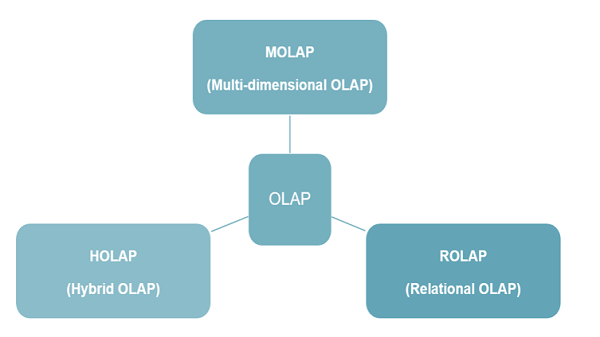Home »
Data Warehouse
Multidimensional Data Model of Data Warehouse
Here, we are going to learn about the Multidimensional Data model, it's working with advantages and disadvantages regarding the data warehouse.
Submitted by Palkesh Jain, on February 03, 2021
The multidimensional data model holds data in the shape of a data cube. Two or three-dimensional cubes are often served by data warehousing. A data cube requires various measurements of data to be interpreted. Dimensions are organizations about which an entity needs to hold information. For example, dimensions allow storing to keep track of items such as monthly item purchases and branches and positions in the store sales record.
A multidimensional database allows to rapidly and reliably providing data-related responses to complicated market questions. The Multidimensional Data Model can be defined as a way to arrange the data in the database, to help structure and organize the contents of the database. The Multidimensional Data Model can include two or three dimensions of objects from the database structure, versus a system of one dimension, such as a list.
In organisations, it is usually used for objective findings and report production, which can be used as the primary source for imperative decision-making processes. Usually, this model is extended to applications working with OLAP techniques (Online Analytical Processing).

How does the Multidimensional Data Model work?
The Multidimensional Data Model, like every other system, often operates based on preset steps to preserve the same pattern in the industry and to allow the database structures already built or developed to be reusable. Any project should go all the way through the steps below to construct a multidimensional data model.
- Congregating the requirements from the client
- Categorizing the various modules of the system
- Spotting the various dimensions based on which the system needs to be designed
- Drafting the real-time dimensions and the corresponding properties
- Discovering the facts from the already listed dimensions and their properties
- Constructing the Schema to place the data, for the information gathered from the above steps
Advantages of Multidimensional Data Model
Followings are the key advantages of Multidimensional Data Model -
- Unlike basic one-dimensional database structures, Multi-Dimensional Data Models are workable on complex systems and applications.
- The modularity of this type of database is an incentive for maintenance workers for tasks with lower bandwidth.
- Overall, the Multi-Dimensional Data Models' operational capability and structural description help to maintain clearer and accurate data in the database.
- It is uncomplicated by specifically specified data positioning creation, in circumstances such as one team constructing the database, another team working on it, and some other team working on maintenance. If and when necessary, it serves as a method of self-learning.
Disadvantages of Multidimensional Data Model
Followings are the key disadvantages of Multidimensional Data Model -
- These types of databases are usually dynamic in design since the Multi-Dimensional Data Model manages complicated structures.
- Being a dynamic structure means the content of the database is often immense in quantity. This makes the device particularly risky where there is a lack of confidentiality.
- The performance of the system is significantly impaired when the system caches due to operations on the Multi-Dimensional Data Model.
- While the final result of a Multi-Dimensional Data Model is advantageous, much of the time the road to achieving it is complicated.
Advertisement
Advertisement